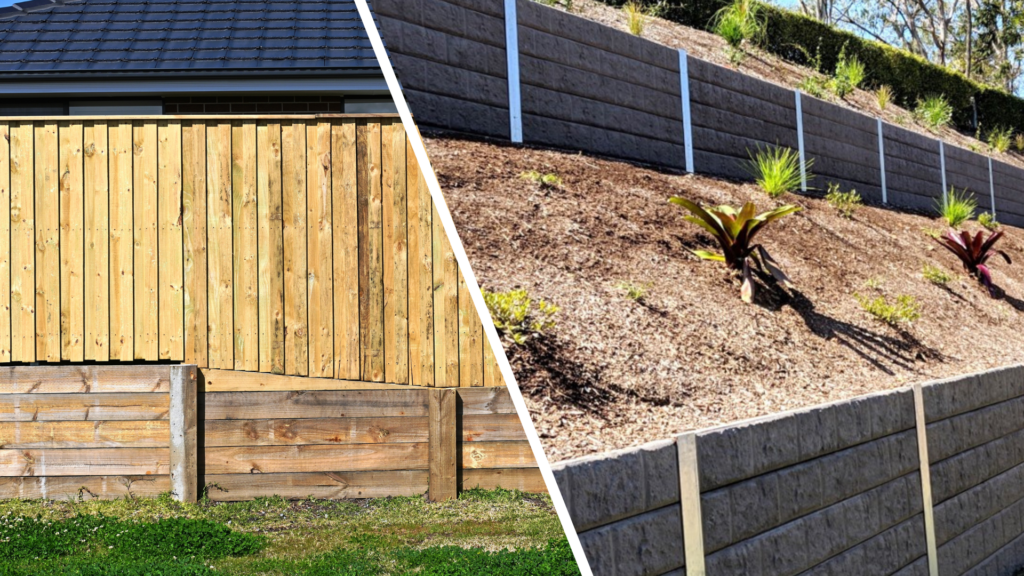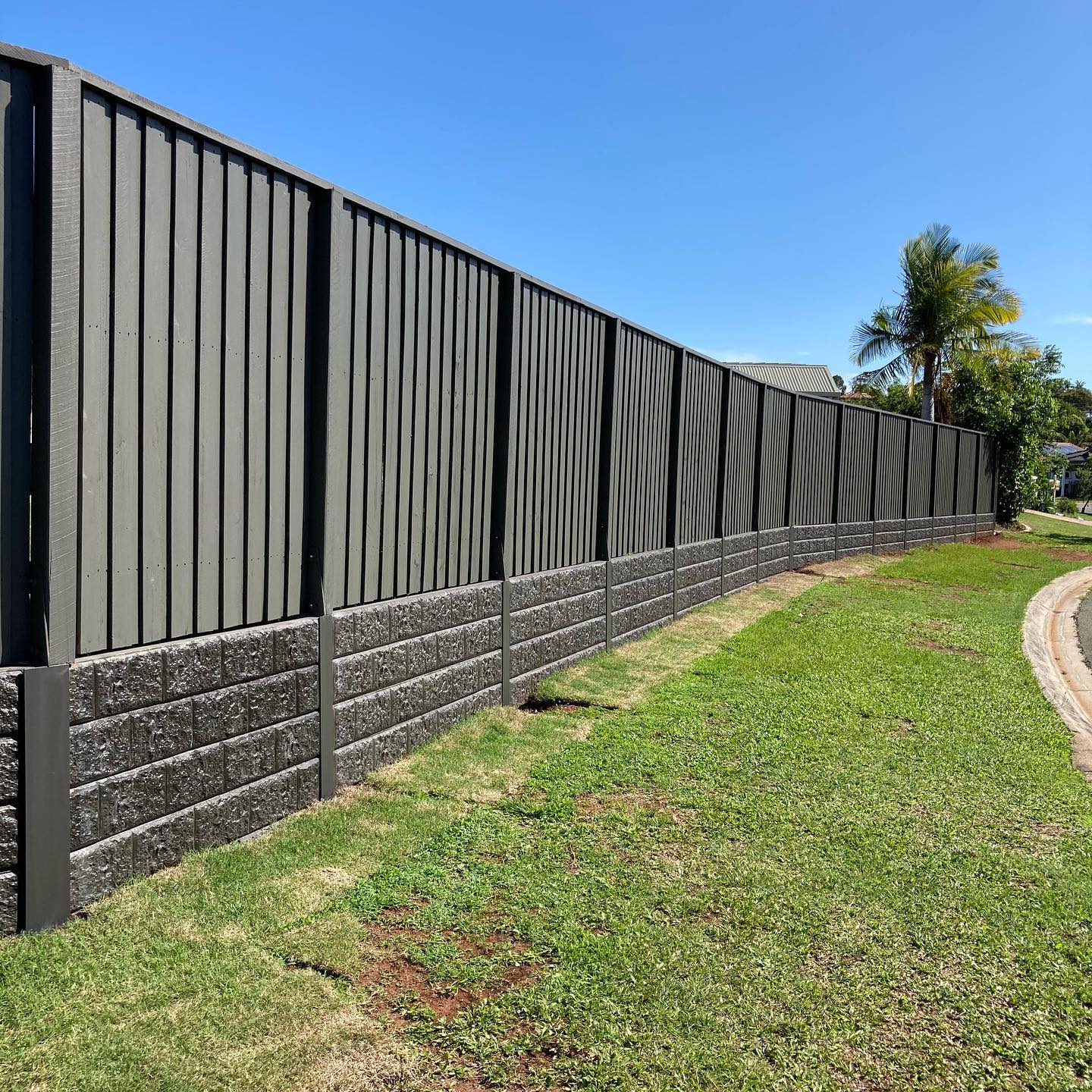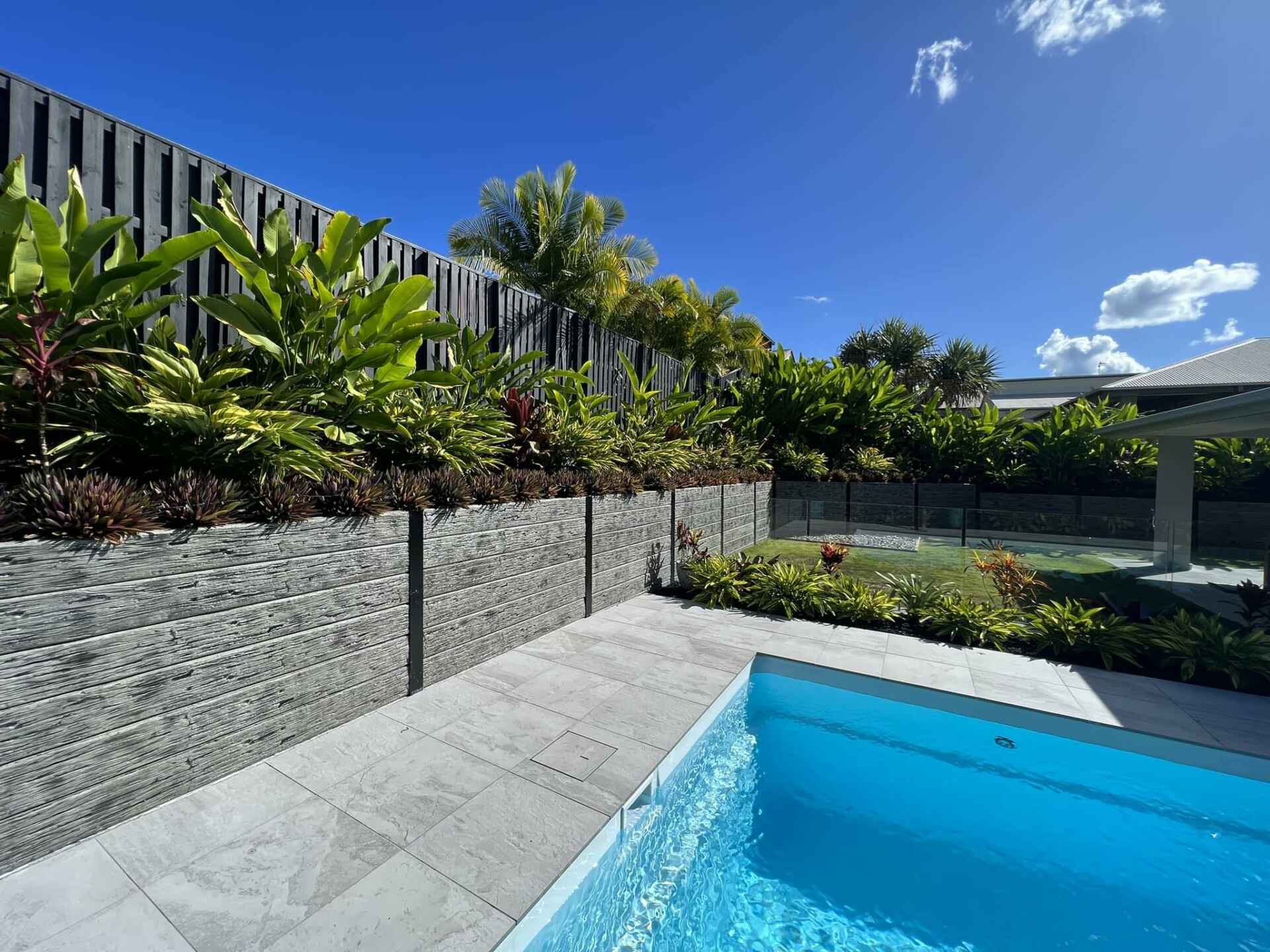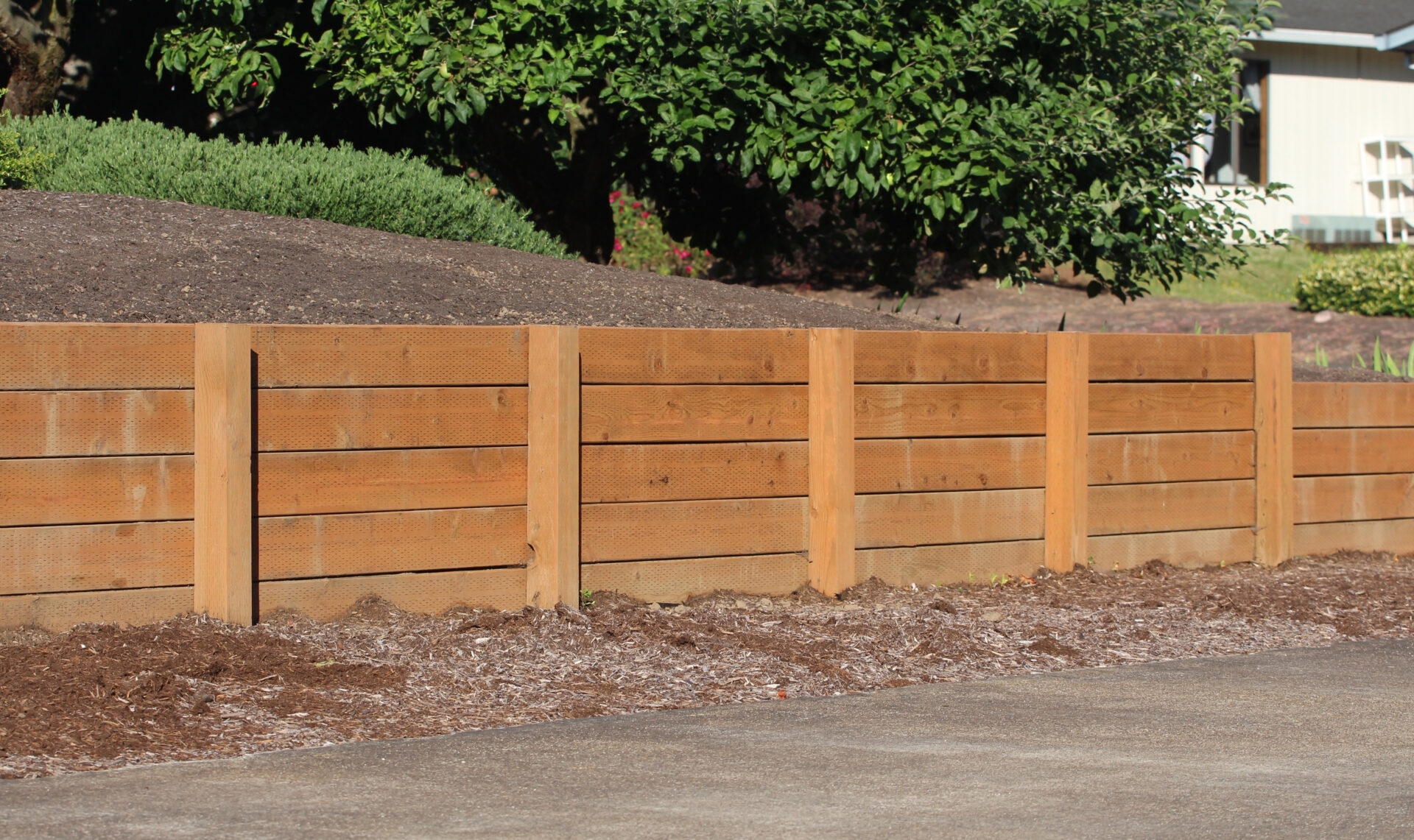
Timber Sleepers vs. Concrete Sleepers for Retaining Walls: The Pros and Cons
When it comes to building a sturdy and visually appealing retaining wall, the choice between timber sleepers and concrete sleepers is crucial. Both options have their own set of pros and cons that need to be carefully weighed, from cost-effectiveness and installation ease to longevity and environmental impact.
Whether you prioritize the natural charm of timber sleepers or the durability of concrete sleepers, understanding the implications of your choice is paramount to choosing the ideal material for your landscaping project.
Pros and Cons of Timber Sleepers for Retaining Walls
Pros:
- Natural Charm: Timber sleepers exude a timeless, warm aesthetic, adding character to your property.
- DIY-Friendly Installation: Lighter and easier to handle, timber sleepers are suitable for DIY projects.
- Environmental Friendliness: Timber is a renewable resource and can be a sustainable choice.
Cons:
- Maintenance Required: Periodic inspections for decay and a fresh coat of sealant are necessary.
- Lifespan: While durable, timber may have a slightly shorter lifespan compared to concrete.

Pros and Cons of Concrete Sleepers for Retaining Walls
Pros:
- Durability: Concrete sleepers are robust and resistant to weathering, pests, and rot.
- Low Maintenance: Minimal upkeep is required, offering a 'set it and forget it' solution.
- Modern Style: Sleek and contemporary, adding a polished look to your property.
Cons:
- Initial Cost: The upfront cost is often higher for concrete sleepers.
- Installation: Concrete sleepers are heavier installation can be difficult.
Durability and Maintenance of Sleepers
When it comes to the strength and upkeep of both timber and concrete sleepers, it's clear that both materials offer resilient solutions. Pine timber sleepers, when treated appropriately, stand firm against decay and pests; as do hardwood sleepers. Routine inspections coupled with the application of sealant, are essential for maintaining their longevity.
Concrete sleepers are resilient to weathering, pests, and rot. Their inherently low-maintenance nature establishes them as a preferred option, providing a ‘set it and forget it’ solution that requires minimal upkeep.
Cost Analysis: Timber vs. Concrete Sleepers
Let's consider price. Timber sleepers are a cost-effective solution, catering to homeowners mindful of their budget. It's imperative to weight this against potential long-term maintenance expenses.
On the flip side, concrete sleepers may be a higher initial investment. Yet, their durability and minimal maintenance needs often mean long-term savings. The upfront expense should be weighed against the minimal ongoing costs.

Style and Design for Retaining Walls
Style preferences play a pivotal role in the choice between timber and concrete sleepers. Timber sleepers, with their innate charm, introduce warmth and character to the landscape. They seamlessly blend with the surroundings, offering a timeless appeal.
Concrete sleepers contribute to a modern and sleek design. With a variety of finishes and styles at your disposal, they lend themselves to a contemporary style. If you prefer a clean, industrial look or a polished appearance for your property, concrete sleepers might be just what you need.
Environmental Impact and Sustainability
Turning our attention to the environmental implications of timber and concrete sleepers, here's what you need to know for your retaining wall.
Timber sleepers sourced from responsibly managed forests actively contribute to the reduction of carbon dioxide levels and are the eco-conscious choice. In contrast, the production of concrete sleepers may involve energy-intensive processes, potentially resulting in a higher carbon footprint.

Sleeper Installation and Retaining Wall Construction
Let's look at the installation process for sleepers in a retaining wall. Timber sleepers, being lighter and more manageable, are a DIY-friendly material. Their ease of handling suits DIY enthusiasts and simplifies the overall construction process.
On the other hand, the substantial weight of concrete sleepers may require additional effort during installation. Seeking professional assistance or employing specialized equipment becomes crucial, especially for larger retaining wall projects. However, this weight contributes significantly to the stability and long-term durability of concrete sleepers.
Tips for Choosing the Right Sleepers for Your Retaining Wall
Selecting the ideal material for your retaining wall means considering several things. Carefully evaluate your budget constraints, recognizing that timber and concrete sleepers come with distinct up-front and ongoing costs. Decide if you are willing to invest time and effort in maintenance with timber or would prefer the limited maintenance concrete option.
Ask yourself what style you would like for your property. Would the natural warm style of timber sleepers compliment your home? Or would the sleek, modern appearance of concrete sleepers be the better fit?
Making the Best Choice for Your Project
The decision between timber and concrete sleepers for your retaining wall depends on your priorities. Weigh up cost, maintenance and style. Whether you value the natural charm of timber or the durability of concrete, ensure your retaining wall not only serves its purpose but also becomes a lasting, aesthetic addition to your property.